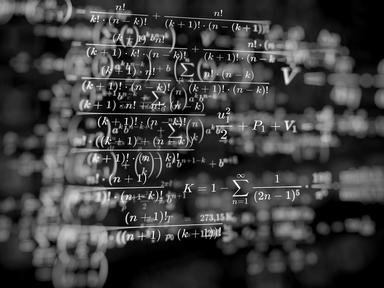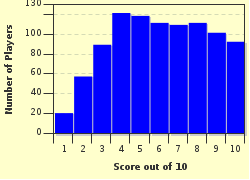Quiz Answer Key and Fun Facts
1. Which Greek letter is used to denote summation in mathematics?
2. Pick any number from 2 to 9. Now, multiply that number by 9. You will get a 2-digit number. Sum up the 2 individual digits and type in your answer.
3. To determine whether a number can be divided completely by 3 without any remainder, we can sum up their individual digits. If the sum is divisible by 3, then the number itself can also be divisible by 3. Which of the following numbers is NOT divisible by 3?
4. The sum of the three most beautiful and intriguing mathematical constants, pi, e and Phi is closest to which integer?
5. Evaluate the sum of all the positive integers between 1 and 100 (inclusive) that are divisible by 10.
6. The sum of the first 10 positive integers, 1 + 2 + ... + 9 + 10 is 55. What's the trick here? Well, notice that 1 + 2 + ... + 9 + 10 = 1 + 10 + 2 + 9 +... = (1 + 10) + (2 + 9) + ... = 11 + 11 + ... = 5 (11) = 55. Now, your turn. What is the sum of the first 1000 positive integers?
7. Given that the sum of the first 100 odd integers, namely 1 + 3 + ... + 197 + 199 = 10000. Now can you tell me what is the sum of the first 100 even integers, namely 2 + 4 + ... + 198 + 200?
8. Is the sum of 1 + 2 - 3 + 4 - ... - 97 + 98 - 99 + 100 the same as the sum of 1 - 2 + 3 - 4 ... + 97 - 98 + 99 - 100?
9. By using the partial fraction technique, the fraction 1/[(n)(n+1)] can be rewritten as 1/n - 1/(n+1). For example, 1/(2x3) = 1/6 is equivalent to 1/2 - 1/3. What is the sum of 1/2 + 1/6 + 1/12 + ... + 1/9702 + 1/9900 = 1/(1x2) + 1/(2x3) + 1/(3x4) + ... + 1/(98x99) + 1/(99x100)?
10. A = the number of sides of a pentagon; B = the third odd positive integer; C = the fifth Fibonacci number (the sequence starts with 1, 1, 2...); D = the number of diagonals of a pentagon; E = the third prime number.
What is the sum of A, B, C, D and E? In other words, compute A + B + C + D + E.
Source: Author
Matthew_07
This quiz was reviewed by FunTrivia editor
crisw before going online.
Any errors found in FunTrivia content are routinely corrected through our feedback system.


